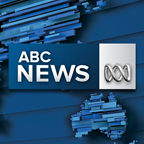
Australia's economy grew by 0.2 per cent in the June quarter, and 1 per cent over the last year, according to the Australian Bureau of Statistics (ABS).
It is the weakest rate of annual growth Australia has recorded in years, in seasonally adjusted terms.
Excluding the COVID-19 pandemic period, the annual rate of economic growth is now the slowest since 1991-92, the year that included the gradual recovery from the 1991 recession.
Treasurer Jim Chalmers warned this week that the Reserve Bank's 13 interest rate rises were "smashing the economy".
But the RBA's latest forecasts anticipated that Australia's economy would record an annual growth rate of 0.9 per cent in the June quarter, as a consequence of its attempt to squeeze inflation out of the economy with higher interest rates.
Callam Pickering, APAC economist at global job site Indeed, said the growth rate in June was "depressing but also expected".
He said economic activity per person was still deteriorating significantly.
"Hampered by cost-of-living pressures and high interest rates, the economy continues to be propped up by government spending and population growth," he said.
"For the sixth consecutive quarter, Australian economic activity declined on a per capita basis and the 1.5 per cent decline over the past year is the largest Australia has experienced in 33 years, excluding the pandemic.
"That's why it feels like a recession for many Australians, despite economic growth remaining positive and unemployment relatively low," Mr Pickering said.
However, since the slowdown in economic activity is tracking in line with the RBA's forecasts, economists say the RBA Board won't be making any sudden interest rate moves after today's numbers.
At the moment, underlying "trimmed mean" inflation is running at an annual pace of 3.8 per cent, which is above the RBA's 2-3 per cent target range.
The RBA expects that number to keep falling to 3.5 per cent by the end of this year, and to 3.1 by June next year.
Krishna Bhimavarapu, APAC economist at State Street Global Advisors, said the continuing slowdown in economic growth was the "clearest indication yet" that monetary policy was restrictive enough in Australia.
"This data should at the very least lead the RBA to make a dovish pivot, considering how uncertain they were during the last meeting," she said.
"We still look for the first rate cut in November as headline CPI [inflation] could ease to around 3 per cent in the third quarter."
Tony Sycamore from IG said despite the RBA's recent warning that it may still have to lift interest rates, markets doubted that would happen.
"The interest rate market still expects the RBA's next move to be a rate cut, with 23 basis points of rate cuts priced by year-end and a cumulative 56 basis points of cuts by April 2025," he said.
Loading








 Add Category
Add Category